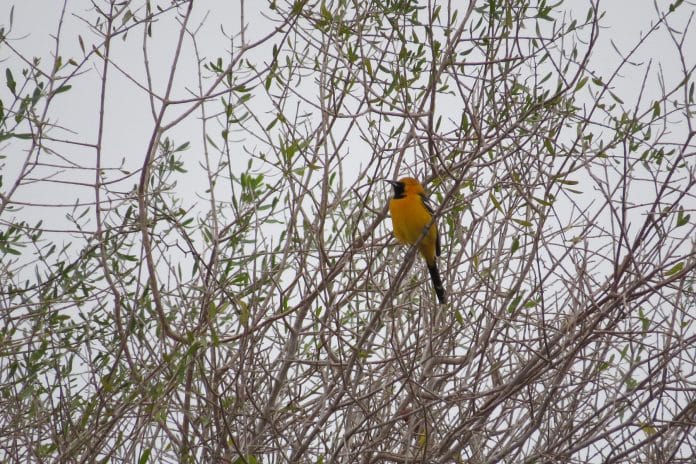Every year during the winter break, thousands of people take part in the annual Christmas Bird Count. December 14 this year marked Audubon’s 120th year.
The Christmas Bird Count was known as the Christmas “Side Hunt”, a holiday tradition back in the early 1800s, where riflemen would shoot and kill as many feathered fliers they could find in a particular area and at that time included small game. The group that had the most birds collected would win, what they won is unknown.
After years of conducting this “Side Hunt,” conservationists, including famed ornithologist Frank M. Chapman began to take notice of the decline in the birding population.
Frank M. Chapman came up with the idea of exchanging their rifles for a pair of binoculars and by that hopes to restore that area’s birding population. From that day on, this became the most popular tradition among hundreds of thousands of avid birders.
According to The First Christmas Bird Count document on Audubon.org, the count held on December 25, 1900, twenty-seven participants observed over eighteen thousand individual birds and over eighty species. Ducks, sparrows, woodpeckers, and owls were among those species counted in over ten states, including Ontario.
The Christmas bird count has been the longest-running citizen science program in the U.S. if not in the world.” Dr. Marianne Korosy, Director of Bird Conservation, said. “It’s important not only for Audubon members but people that are interested in birds.”
Dr. Marianne Korosy explained another vital factor for this bird count: tracking changes in species diversity. For example, if species X had been observed at the same location for over eighty years and for the next twenty years, not one sighting was recorded, that could be one of the indicators of climate change.
“The Christmas bird count not only documents the number of birds of each species but they document the diversity of the species that are present in the same time increment every year,” Dr. Marianne Korosy said. “The count always runs from December 14 to January 5. We are sampling, in essence, the birds in the same time frame every year in the same 15-mile diameter circle. That gives us a long-running database that we can evaluate trends, the population as well as species diversity.”
Linda Vanderveen and Bev Hansen organized two separate bird counts in Hernando County.
On the Brooksville Christmas Bird Count, we got 110 species. The unusual birds were a Clay-colored Sparrow, a Peregrine Falcon, a Broad-winged Hawk, a Baltimore Oriole, and a Says Phoebe. The Brooksville Circle’s center is Bystre Lake, and the circle is 15 miles across. We have seven teams covering the areas.
The most numerous bird species were Robins, Crows, Ring-necked Ducks, Cowbirds, Coots, and Cattle Egrets. Birds that we don’t find anymore are the Burrowing Owls, Great Horned Owls, and several species of ducks. Loss of habitat has taken a toll over the years.
~Linda Vanderveen via email
The most outstanding bird for the Aripeka-Bayport CBC is an adult male Hooded Oriole, a very rare bird that has only been documented in Florida twice before. It was found in Weekiwachee Preserve and is still being seen by countless birders who are traveling from various parts of the state to see it. Thirty-two birders participated in this count. We saw 17 species of ducks and 14 species of shorebirds.
Parenthetically, in the days after the CBC, while some birders were on their way to see the Hooded Oriole, they found another bird rarely seen in Hernando County called an Ash-throated Flycatcher. This is also in Weekiwachee Preserve.
~Bev Hansen via email
Hernando Audubon’s participation in the Christmas Bird Count can document changes in bird species happening here in Hernando county. Those feathered friends we see out and about during our hikes or walks, biking, driving, or even watching them visit bird feeders in our backyards is just one way of understanding the effects of habitat loss and changes in the climate.
Those interested in learning more about the Christmas Bird Count, please visit: https://www.audubon.org/conservation/science/christmas-bird-count

